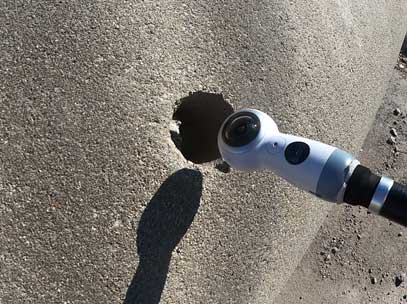
By Clinton Crafton
Building collapse is often seen as the pinnacle discipline of technical rescue. Although most fire departments aren’t prepared to invest in collapse equipment and training—and let’s be honest, it is a considerable investment at that—all agencies face some degree of risk in this arena. When we use the risk/frequency model to assess the potential for collapse response, it is safe to say that most of us will not respond from our own station to a large-scale building collapse. However, many of our agencies will respond, and quite often do, to the more common car-into-a-building call. In between these two metrics is the relatively common potential for tornados. No matter the severity, someone is going to be first-due and often it will be a department with no collapse resources whatsoever.
Some collapse teams, including those in the Federal Emergency Management Agency Urban Search and Rescue system, have access to some truly significant search technology, but the expense is largely cost prohibitive for anything less than a big-city budget. When looking at where to invest precious technical rescue money, high-end drones and search cams fall pretty far down the list as a luxury. In fact, most departments wisely focus on getting boots on the ground while waiting for the big resources to arrive. Short of calling out and listening for a response, there’s not much else that can be done to search a collapsed structure without collapse shoring or high-tech search teams. However, the last few years have seen a change that have some departments rethinking their approach.

The advent of unmanned aerial vehicles (UAVs) has brought the dream of having a helicopter birds-eye view to the mainstream. Still, many UAVs marketed to fire and rescue run in the thousands of dollars, effectively keeping them out of reach of many departments. There are now several UAV options available in the range of $100-$300, many that fall below the Federal Aviation Administration restrictions for size/weight (please be familiar with all applicable laws before taking to the sky). Many brands now offer 4K high-definition stabilized cameras in a very portable and convenient package. Being able to quickly gain an overhead view of a large scene can be invaluable to an initial incident commander. Along with that, wide-area search can be completed in a fraction of the time using one or more UAV platforms. Jumping up only slightly in price can bring a department the technology of infrared, a true force-multiplier in searching for people among debris or in poor lighting.
RELATED FIREFIGHTER TRAINING
So Your Department Bought a Drone; Now What?
Training Minutes: Best Practices for Fire Service UAS
Authoring Your Drone Program: Choose Wisely


When it comes to ground search, advances in technology have reduced cost in this arena as well. While a simple small adventure camera can be a good solution, the introduction of low-cost 360° cameras adds a whole new element to this search option. Using a long selfie stick and a standard 360° camera creates a search option that rivals the $15,000 systems available to the big teams. There are many such cameras on the market, some of which fit nicely in a standard core drill hole. In all of these options, a live preview of the image can be turned, moved, and zoomed on a smartphone to provide a very clear view of the interior of a space. If needed, small0scale LED lighting can be introduced into the space as well. Since still photos don’t really do this technology justice, some video examples can be seen here: https://www.advancedrescue.com/360-search.


When disaster strikes a big city, resources are often available to meet the challenge. When disaster strikes a suburban city or town, the delay for resources may be manageable. But when disaster strikes the remaining majority of small towns and isolated urban centers, time takes on a whole new meaning. Although most of us can’t afford high-end search systems or unmanned aerial devices, technology has brought suitable substitutes well within range. With a budget of under $500, any department can have the tools they need to perform high tech search on any scene.
Clinton Crafton is the deputy chief of Operations with the Whitestown Fire Department, on the northwest side of Indianapolis, Indiana. With 27 years in the fire service, Clinton has served in all roles from firefighter through deputy chief. Along the way, Clinton has found a strong interest in technical rescue, leadership psychology, and technology in the fire service.
ALSO

